Showing posts with label candid. Show all posts
Showing posts with label candid. Show all posts
16 May 2011
Bay To Breakers 2011
Labels:
"street photography",
2011,
bay to breakers,
candid,
candids,
photography,
photoroundup,
photos,
sf,
street photography,
weirdness
2 May 2011
The 2011 How Weird Street Faire
Labels:
candid,
candids,
event,
how weird street faire,
photoroundup,
photos,
San Francisco,
street faire,
street photography
3 April 2011
Wondercon 2011
Labels:
candid,
candids,
geekery,
photography,
photoroundup,
San Francisco,
weirdness,
wondercon,
wondercon 2011
21 March 2011
Sunday Streets March 2011
Labels:
bicycles,
candid,
candids,
photos,
San Francisco,
sunday streets,
transport,
weirdness
7 March 2011
Don't let the rain slow you down
Labels:
"street photography",
bicycles,
candid,
candids,
photography,
photoroundup,
photos,
San Francisco,
water
6 March 2011
transport tribulations
Labels:
"street photography",
candid,
photography,
photoroundup,
photos,
San Francisco
5 February 2011
the moon and mars-1
Labels:
"street photography",
candid,
candids,
photography,
photoroundup,
photos,
San Francisco
4 December 2010
India 2010: part 4 - on the go

Rickshaws in Gujarat have been largely upgraded since I last visited - the engines run quietly and cleanly on compressed natural gas. However, a few of the old-style rickshaws remain - they scoot along making a distressing smell (it's like they run on kerosene) and an odd putt-putt noise as they move along.


If it has wheels, it's used to move goods. This old rickshaw has been converted for use as a truck to deliver bread.

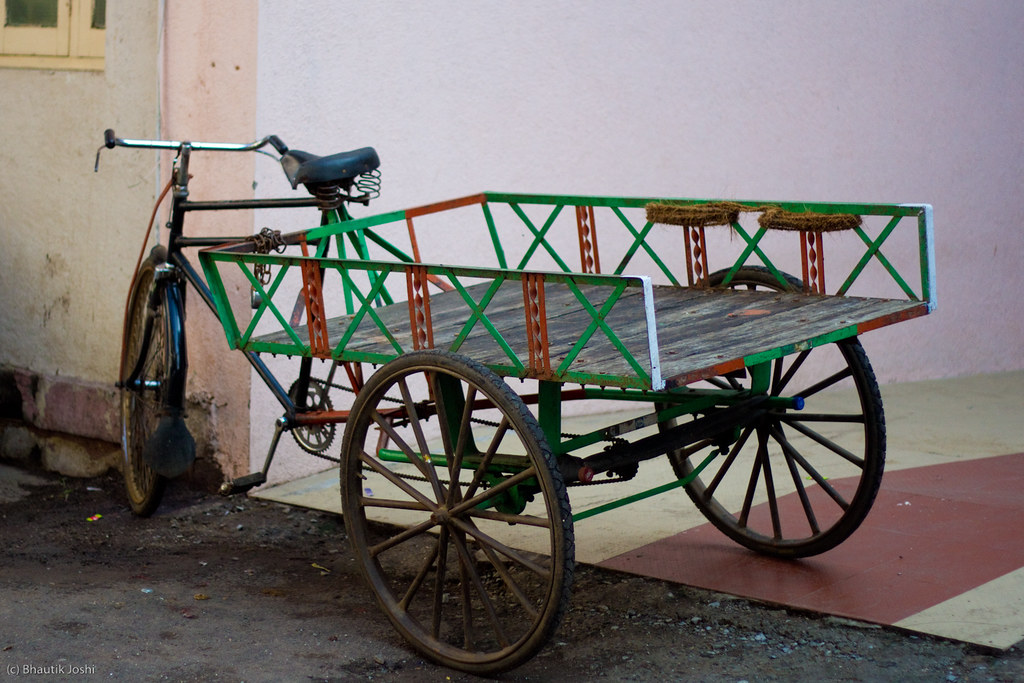
Bicycles are also a common mode of transporting goods - I saw quite a few of these bicycles with a large tray and axle on the back. Note the complete lack of gears - I saw quite a few riders sweating and pedaling with difficult strokes on uneven, bumpy roads with a huge load of cargo on the back.


Complex, beautiful modes of dress were no obstacle for determined bicycle riders in Rajkot.
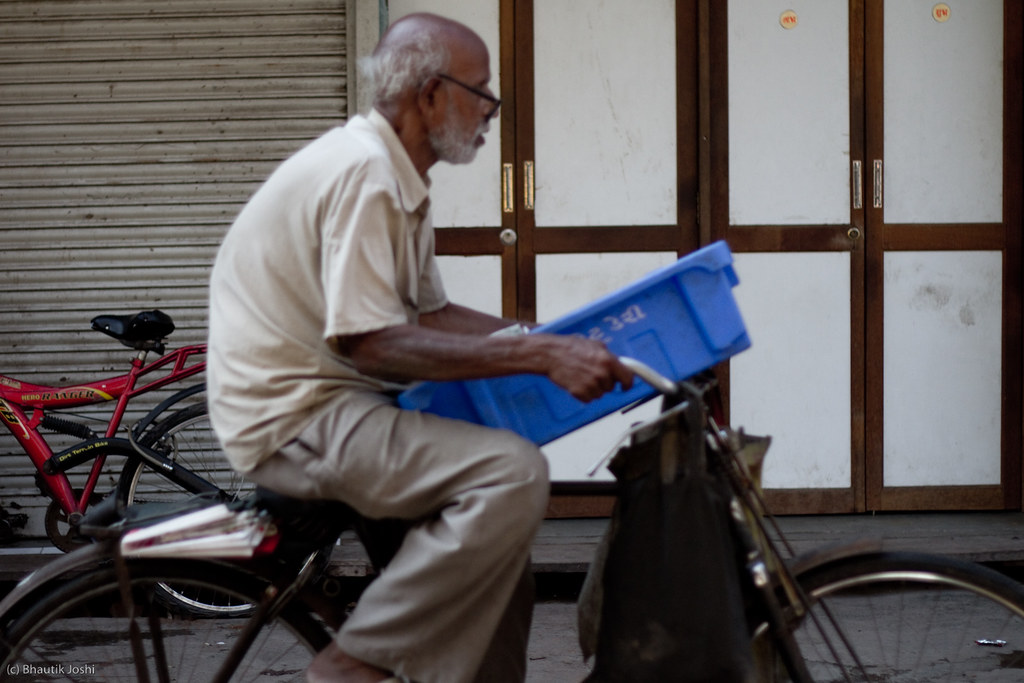

Scooters and motorbikes seemed to be, by far, the most common mode of transport on Rajkot. You'd see as many scooters with two or more riders as you did with one rider; again, they seemed to be yet another way of getting people and goods around. The sheer volume of them and their sooty exhausts let me to wonder if they were a big part of the pollution problem in the area.

Honda Heroes were the most common type of motorbike that I saw over there. The roads were chaotic (traffic driving in both directions on a one-way road, general multi-way chaos when it came to roundabouts) but, in the end, accidents were few and there was a bizarre sort of logic to it. The driving algorithm went like this:
1. Start the vehicle, honk your horn.
2. Head in the direction of where you want to go (doesn't matter if you're moving against the direction of traffic). If there is someone where you want to be, honk your horn.
3. If there is someone bigger than you, give way.
It's completely insane, but it seemed to work even with the insane combination of pedestrians, bicycles, rickshaws, cars, trucks and cows on the road.


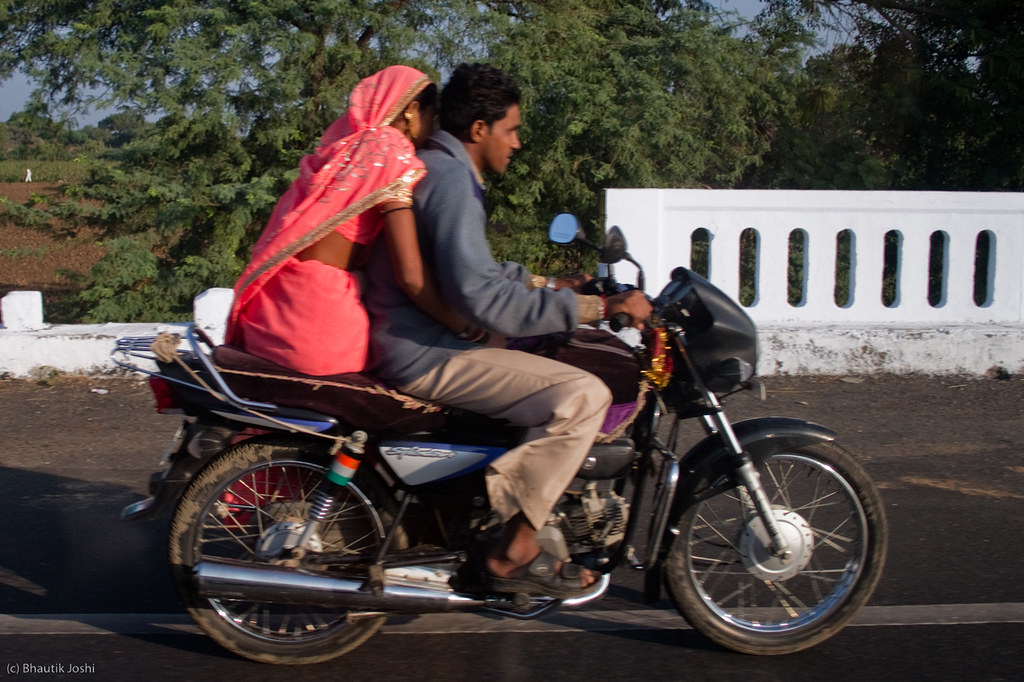
There are plenty of family-carrying motorbikes out on the highways.
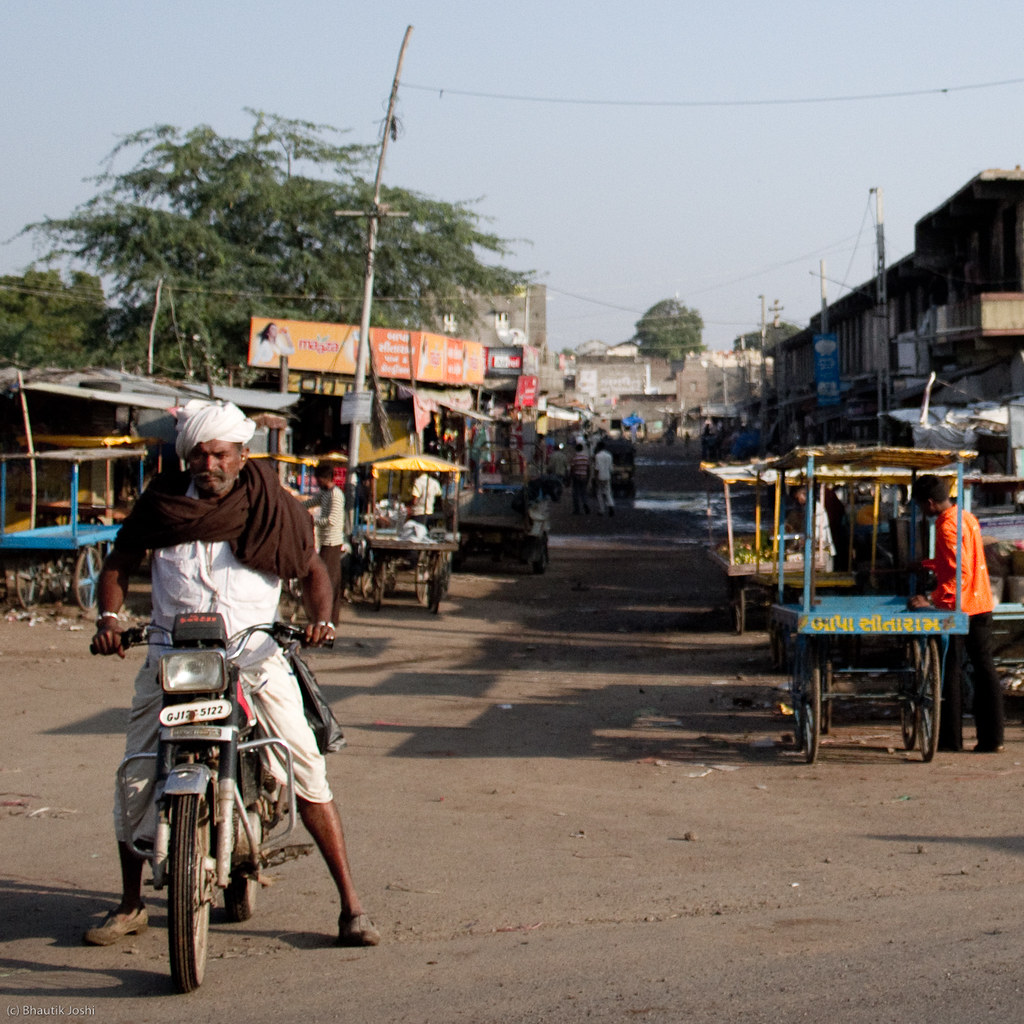

Family transport.
Labels:
"street photography",
ahmedabad,
bicycles,
candid,
candids,
faces,
gujarat,
india,
motorcycles,
photography,
rickshaws,
road,
traffic,
transport,
travel
2 December 2010
India 2010: part 2 - water and the markets
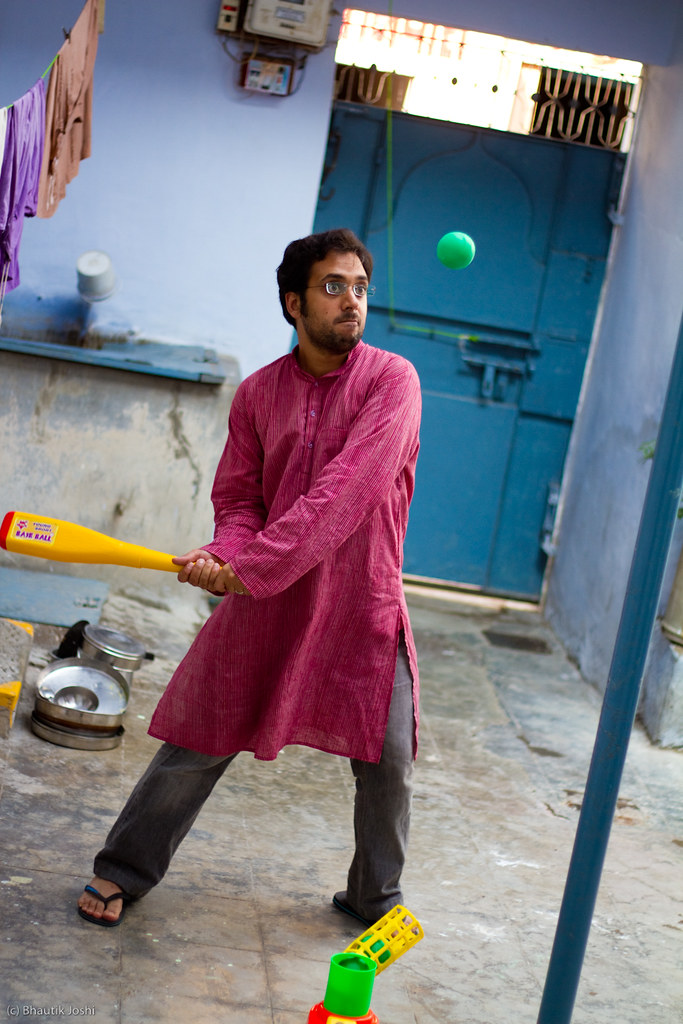
One way to pass the time in Rajkot was to levitate objects using telekenisis. It's not as easy as it looks.

Rajkot is a city of 1.5 million people, having rapidly expanded in the recent past. I remember lying on the rooftop of my grandmothers place and sleeping out under a blanket of stars; nowadays, it's difficult to see more than a few points of light on a clear night due to the haze and pollution that covers the city. The city is one of the world leaders in manufacturing diesel pumps, but the success has come at a high environmental price.

The Aji dam collects water from the river and supplies Rajkot; poor planning, however, means that some parts of the city (notably the large quarter where my grandmothers place is) sits above the level of the dam. As such, after industry has taken its (fairly hefty) share of the water, there isn't much left for residents in these areas. The dam is about as full as it's ever been - the drought has been broken here for several years and heavy rains means that the dam is nearly overflowing.

In this part of town, water runs for 20 minutes a day. When the water is running an electric pump runs the water up to a storage tank on the roof - a fixed amount that is carefully used during the course of the day. If the pump is out or if the water runs at another time of day, the water is lifted out using buckets from the small well in the house where it collects for pumping. This picture shows my awesome cousin, Jagrut, doing just that.

Rajkot is an industrial town; near my grandmothers place, there are a few motorcycle repair shops just like this one. Often it's too hot to work during the day, so a good chunk of the work gets done after the sun has set.

Stray dogs are sometimes looked after by local shopkeepers.
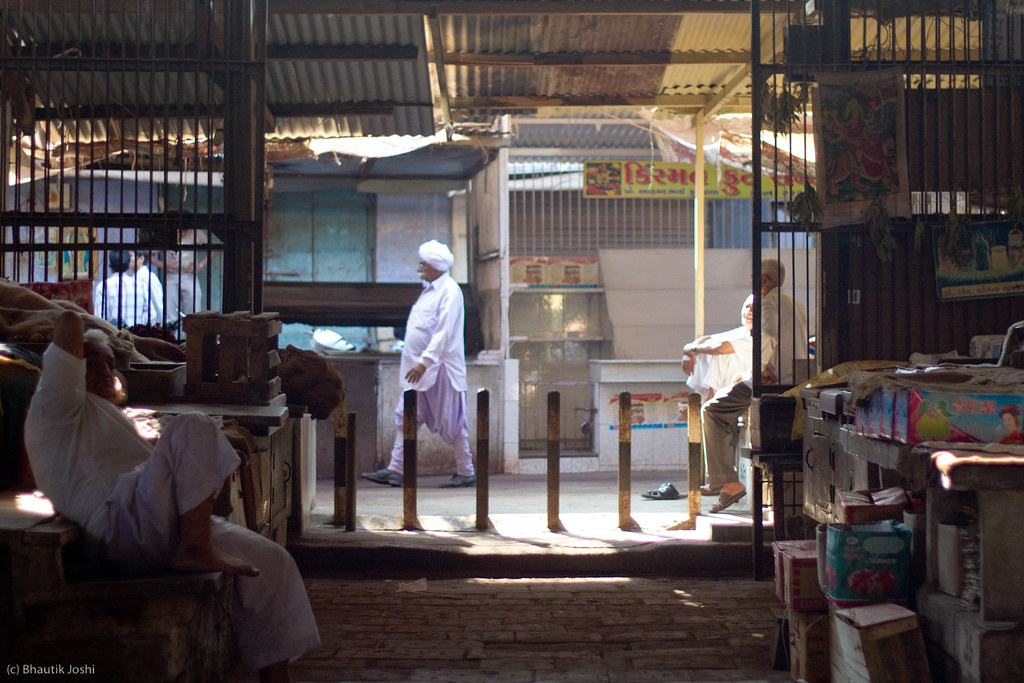
The local bazaar sells fresh produce; it's a rickety old building with high ceilings and it stays cool during the day. My mum went along to get a few vegetables and I snuck about unsuccessfully, noticed at every turn.


Gujarat state is one of the world's centres for textiles - a lot of cotton is grown here, and much of the chemical industry needed to dye the fabrics is also well established. Bright, vibrant textiles are a staple here, and are easily and cheaply available.

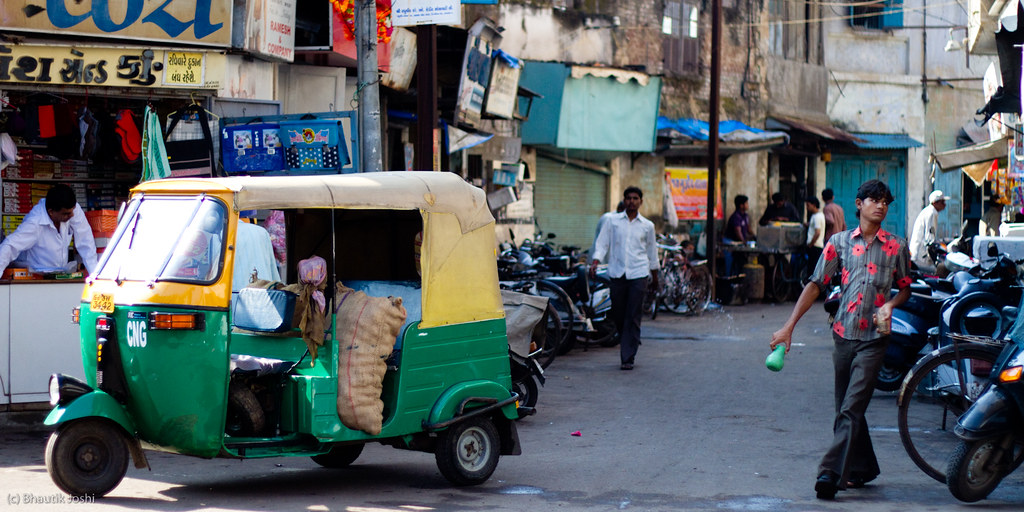
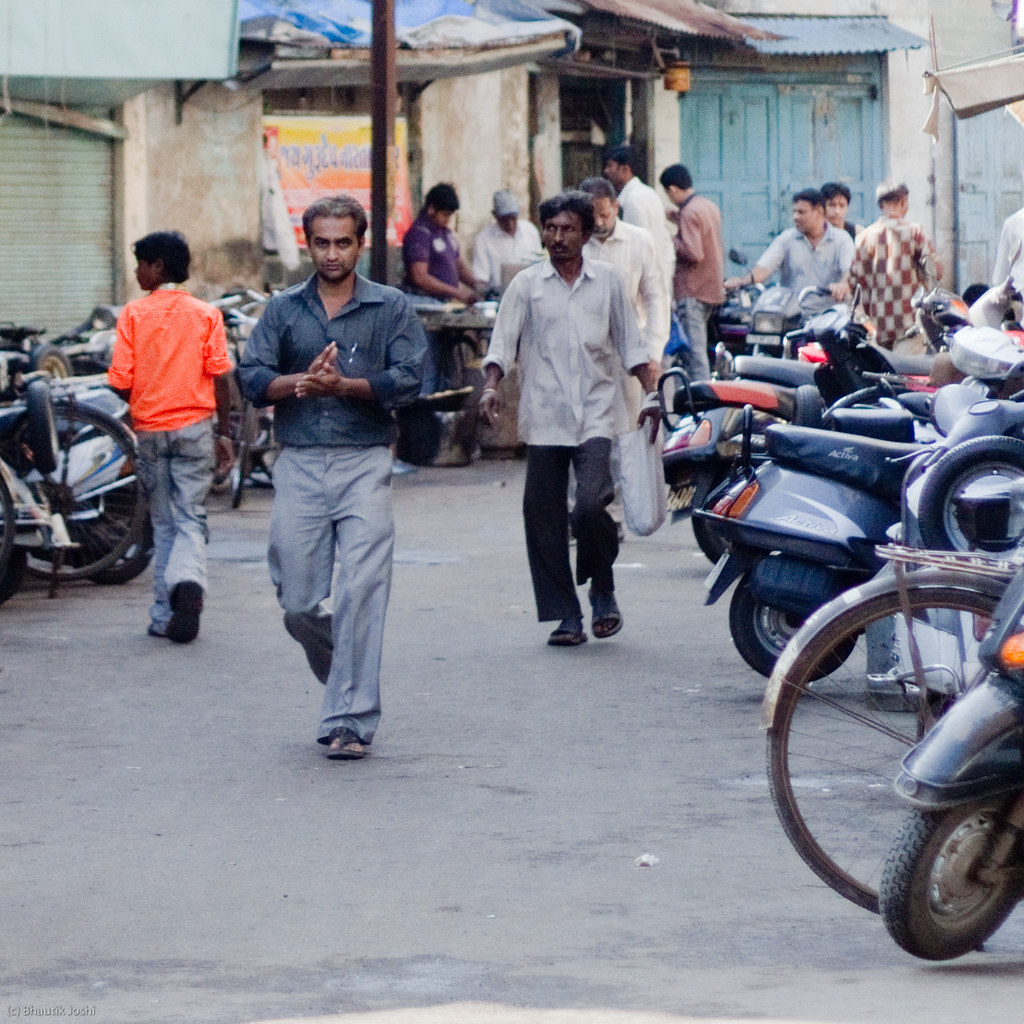
This guy: rolling tobacco in his palms.
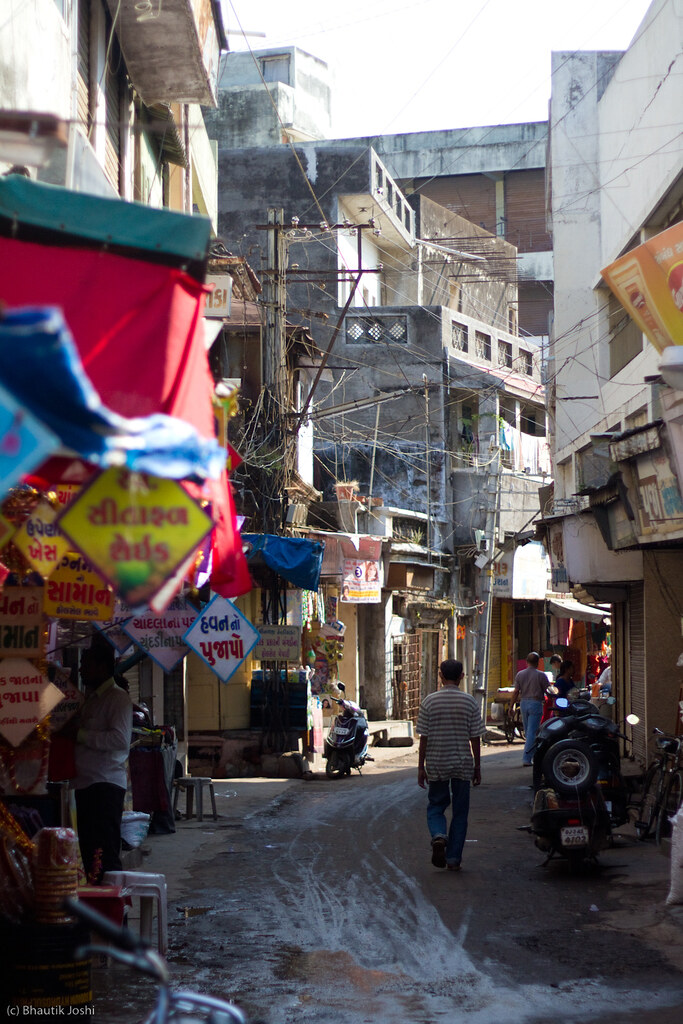
The market district in Rajkot seem to consist entirely of narrow laneways, light filtering down between three-story buildings and the rats nest of wiring that seems to accumulate on every street corner.
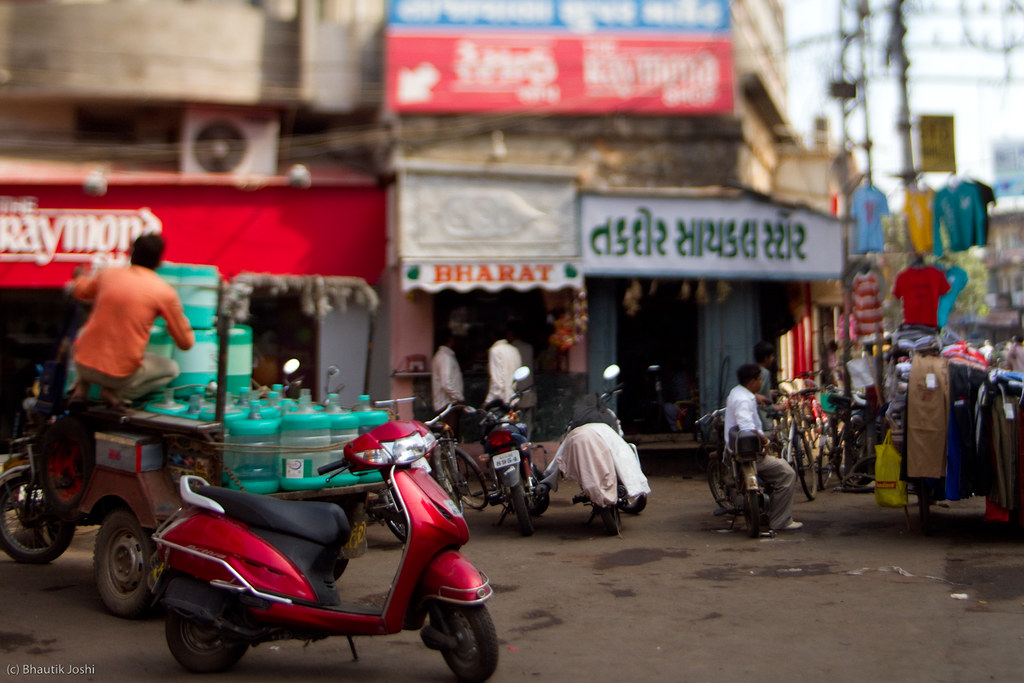

Archways and ancient doors hint at the remains of the old city, which is being (very gradually) replaced by neon shop fronts.
Labels:
"street photography",
ahmedabad,
candid,
candids,
faces,
gujarat,
india,
markets,
photography,
road,
travel,
water
Subscribe to:
Posts (Atom)





























